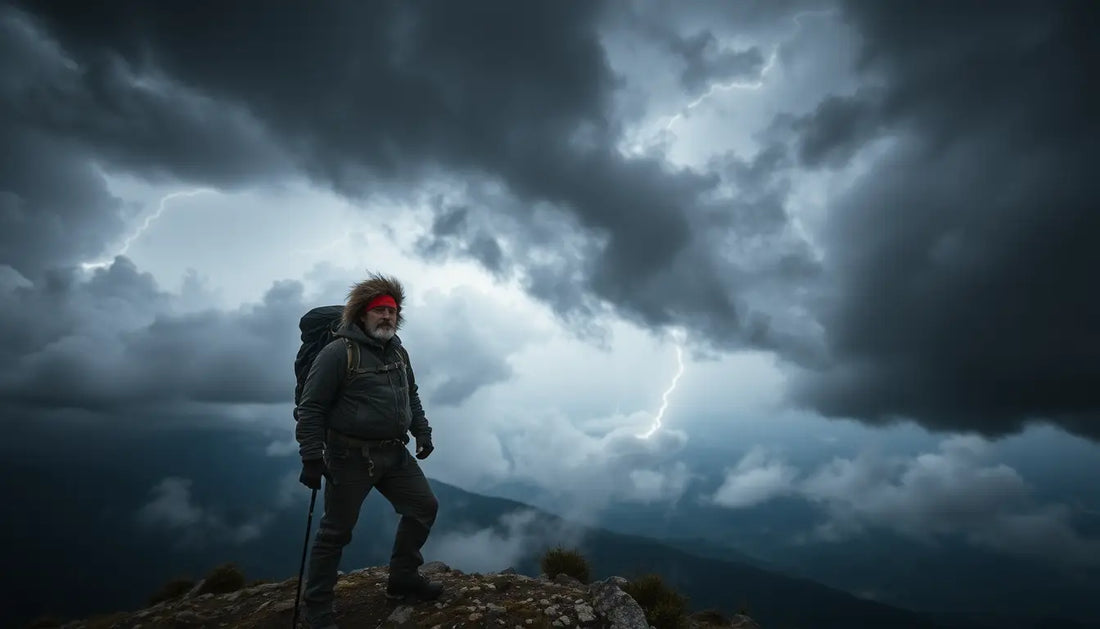
Weathering the Storm: Preparing for Adverse Weather Conditions Outdoors
TF AdventureAs the sun dips below the horizon, the sky transforms into a canvas of swirling clouds, hinting at the impending storm. For those who venture into the great outdoors, whether for recreation or necessity, understanding how to prepare for and navigate through adverse weather conditions is a critical skill. At TF Adventure, we are dedicated to equipping our customers with the knowledge and gear necessary to safely weather any storm.
Assessing the Forecast
The first step in preparing for adverse weather is to closely monitor the forecast. By staying informed about the expected weather patterns, you can make informed decisions about your outdoor activities and ensure that you have the appropriate gear and supplies on hand. From sudden thunderstorms to prolonged cold snaps, being aware of the potential challenges ahead can make all the difference in your safety and comfort.
Interpreting Weather Patterns
Familiarizing yourself with common weather patterns and their associated risks is essential. Understanding the signs of an approaching cold front, the development of a low-pressure system, or the potential for severe thunderstorms can help you anticipate and respond to changing conditions. By learning to read the sky and interpret meteorological data, you can make informed decisions about when to postpone your outdoor plans or take necessary precautions.
Staying Connected
In the digital age, we have access to a wealth of weather information at our fingertips. Utilizing weather apps, online forecasts, and real-time updates can provide you with the most up-to-date information, allowing you to adjust your plans and prepare accordingly. Additionally, investing in a reliable emergency radio or satellite communication device can be a lifesaver in remote areas where cell service may be limited.
Protecting Yourself from the Elements
Adverse weather can pose a variety of threats, from the scorching heat of a summer heatwave to the bone-chilling cold of a winter blizzard. Equipping yourself with the right gear and knowledge can mean the difference between a comfortable, safe experience and a dangerous, life-threatening situation.
Lightning Safety
Lightning strikes are a significant risk during thunderstorms, and understanding how to minimize your exposure is crucial. Avoid open areas, tall isolated objects, and bodies of water, and seek shelter in a substantial building or vehicle. If caught in the open, crouch low, with feet together, to reduce your contact with the ground.
Flood Preparedness
Sudden, heavy rainfall can lead to flash flooding, which can be both dangerous and unpredictable. If you find yourself in a flood-prone area, be prepared to evacuate quickly and move to higher ground. Avoid attempting to cross flooded roads or bridges, as the depth and current can be deceptive and potentially deadly.
Heat Wave Survival
Extreme heat can pose a serious threat to your health, leading to heat exhaustion, heat stroke, and other life-threatening conditions. Staying hydrated, wearing lightweight, light-colored clothing, and seeking shade or air-conditioning can help you stay cool and comfortable.
Cold Weather Precautions
Exposure to cold temperatures, wind, and precipitation can quickly lead to hypothermia and frostbite. Dress in layers, wear insulated and waterproof clothing, and maintain a high level of physical activity to generate body heat. Additionally, be aware of the signs of hypothermia and take immediate action to warm the affected individual.
Building Shelter and Signaling for Help
In the event of an emergency or unexpected weather event, your ability to construct a shelter and signal for assistance can be the key to your survival.
Shelter Construction
Knowing how to build a sturdy, weatherproof shelter can provide you with critical protection from the elements. From simple lean-to structures to more complex designs, mastering the techniques of shelter construction can ensure that you have a safe, dry place to rest and wait out the storm.
Emergency Signaling
If you find yourself in a dire situation, being able to effectively signal for help can be a lifesaver. Invest in emergency flares, signal mirrors, and other signaling devices that can be easily spotted by search and rescue teams. Additionally, familiarize yourself with the universal distress signals, such as three whistle blasts or three fires in a triangular pattern.
Conclusion
Weathering the storm is not just a metaphor, but a critical skill for anyone who ventures into the great outdoors. By understanding the weather patterns, preparing for the elements, and mastering the techniques of shelter construction and emergency signaling, you can ensure that your outdoor experiences are safe, enjoyable, and memorable. At TF Adventure, we are committed to providing our customers with the knowledge, gear, and resources they need to conquer any adverse weather condition and emerge from the storm stronger and more resilient than ever before.
